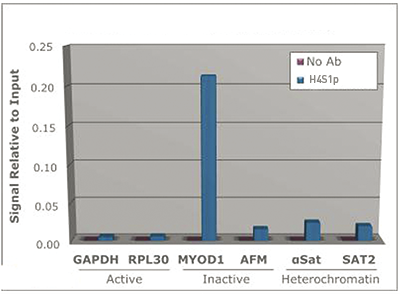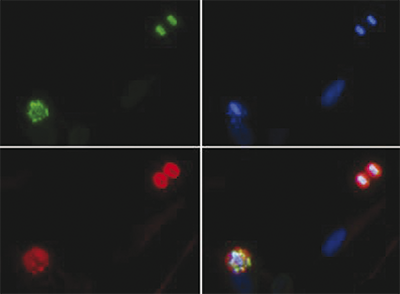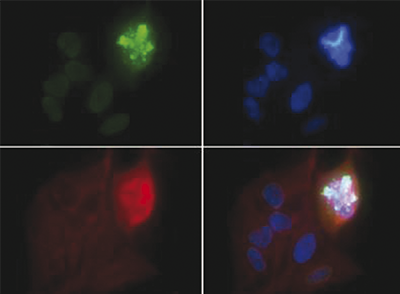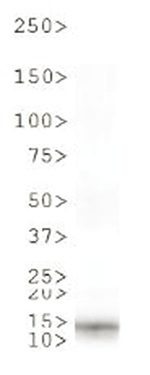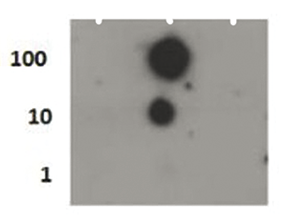Chromatin is the arrangement of DNA and proteins in which chromosomes are formed. Correspondingly, chromatin is formed from nucleosomes, which are comprised of a set of four histone proteins (H2A, H2B, H3, H4) wrapped with DNA. Chromatin is a very dynamic structure in which numerous post-translational modifications work together to activate or repress the availability of DNA to be copied, transcribed, or repaired. These marks decide which DNA will be open and commonly active (euchromatin) or tightly wound to prevent access and activation (heterochromatin). Common histone modifications include methylation of lysine and arginine, acetylation of lysine, phosphorylation of threonine and serine, and sumoylation, biotinylation, and ubiquitylation of lysine. In particular, phosphorylation of H4 Ser1 (H4S1p) has been linked to mitosis and DNA repair. This modification is enriched in sites proximal to double stranded brakes, but not those associated with UV damage. Casein kinase II (CK2) phosphorylates H4 Ser1, and it also implicated in regulating the DNA damage response. Furthermore, recruitment of CK2 requires the SIN3/RPD3 histone deacetylase complex.


